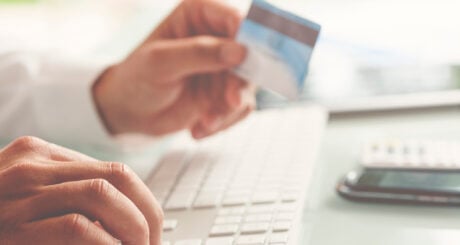When making an online purchase, you typically have to provide your debit or credit card’s CVV number, sometimes called the card’s security code. In general, online or over-the-phone purchases don’t go through if you don’t provide these unique digits. So what are they, and why are they so important?
What is a CVV number?
A card verification value (CVV), sometimes called a card verification code (CVC), is the unique three- or four-digit security code associated with a debit or credit card.
Traditionally, a security code is a unique number encoded or printed on the physical card. However, in recent years, the wave of virtual payment cards and digital wallets has led to dynamic CVVs that change every time you make a purchase.
What does ‘CVV’ stand for?
CVV stands for ‘card verification value’ — just one of several names and acronyms used to describe these codes.
Other common terms include:
- CVV or CVV2 (card verification value)
- CVC or CVC2 (card verification code)
- CSC (card security code)
- CID (card identification number)
- PCSC (printed card security code).
Sometimes, it is simply called a ‘security number’.
What you hear may depend on your card’s provider, but what’s important to know is that they all refer to the same thing — the security code on a debit or credit card.
» MORE: How to activate a new credit card
What is a dynamic CVV?
A dynamic CVV, sometimes called a dCVV, is a temporary security code attached to a virtual card. If you have a physical card with a traditional CVV, the virtual version of that card may have a dynamic CVV. Dynamic codes change every time you make a purchase, or at least daily, to keep the digital version of a debit or credit card secure. While they are a relatively new security feature, dynamic CVVs have become increasingly popular since Australia’s ‘big four’ banks — CommBank, Westpac, NAB, and ANZ — launched them in 2022.
When you use a card with a dynamic CVV, you’re sent a unique, one-time code to your phone or email. You then need to enter this code to complete the purchase. The card issuer’s fraud prevention system usually generates the code, which is only valid for a specific time. The short window makes it more difficult for fraudsters and credit card scammers to steal your card information.
A dynamic CVV is generally more secure than a traditional, static CVV number, which can be used multiple times if stolen.
» MORE: 9 Things to Know Before Getting Your First Credit Card
How are credit card security codes used?
Credit card security codes can be used to authorise different types of transactions, such as:
- Online purchases. When you make an online purchase, the merchant typically asks for your card’s 15- or 16-digit number, expiration date and CVV number, and full name and billing address. Providing the security code helps verify that you have the physical card and that you’re not someone who has stolen your information.
- Telephone purchases. When you make a purchase over the phone, you often need to provide the security code because the merchant cannot verify your identity by sight, signature, or by entering the card’s PIN.
- Recurring payments. You’ll also need to provide a security code to set up a direct debit to pay for a service, such as Netflix or Spotify. You can use a dynamic CVV’s temporary code to set up these ongoing payments.
- Digital wallets. You can use a traditional or dynamically-generated CVV to complete a purchase while using a wearable payment device or digital wallet, such as Apple Pay or Google Pay.
It is important to note that CVV numbers are not used for all types of transactions. For example, you do not need to provide your CVV number when you use a PIN, such as when shopping in person at a store or using an ATM.
» MORE: How to use your credit card at a bank or ATM to get cash
PIN vs CVV
Your CVV number is not your personal identification number (PIN). While they both help protect you against fraud, there are key differences between them.
- CVVs are three or four digits, while PINs are typically four.
- CVVs are set by the bank or card provider, while the user sets PINs.
- CVVs on physical cards can’t change, but you can change your PIN.
- CVVs are printed on physical cards, but PINs are not.
- CVVs are used for online or over-the-phone purchases. PINs are used for ATM withdrawals and most in-store transactions.
Since the two types of codes are similar, you might be tempted to use the CVV as your PIN. While having one number for online and in-person transactions might sound like a good idea, it’s a security risk.
» MORE: What do credit card numbers mean?
How to find your card’s security code
How you’ll locate the code depends on whether you have a physical card with a traditional CVV or a digital card with a dynamic CVV.
Locating the CVV number on a physical card
A credit card CVV is usually encoded or printed on the right-hand side of the signature panel. However, the location and the number of digits used in the code can vary depending on the card’s provider and the type of credit card.
For example, Mastercard and Visa cards have a three-digit CVV on the right-hand side of the signature panel on the back of the card. American Express cards have a four-digit CVV on the front of the card.
Looking up a dynamic CVV online
A digital card’s dynamic CVV changes regularly, so you must use online banking to find the latest iteration.
In the Westpac mobile banking app, for example, the digital credit and debit cards are visible under the Cards navigation, where you can see the digital version of their cards.
Remember, the number you find will differ from the one printed on the back of the physical card.
How to protect your card against fraud
If you’re concerned about the security of your online transactions, take this opportunity to educate yourself about smart credit card security habits.
- Don’t share your CVV, credit card number and expiration date with anyone outside of typical use.
- Use a dynamic CVV whenever possible to protect yourself online — opting for a dynamic CVV instead of the static number associated with your physical card is a smart way to increase your card’s security.
- Your cards should always be in your possession. Traditional CVV numbers can only be found on your card, so keep it safe.
- Regularly check your credit card statements to make sure you recognise every transaction. If you look at your balance, you might not notice transactions that aren’t yours.
- Change your PIN and online banking password every six months. Contact your card issuer immediately if you believe your security code is compromised.
🤓 Nerdy tip
Banks now have intelligent fraud protections in place for customers, particularly for credit cards. CommBank, for example, offers a 100% money-back guarantee on all fraudulent transactions on credit cards.
DIVE EVEN DEEPER

Credit Card Fees: What They Are And How To Avoid Them
Credit card fees can vary among providers. Find which charges are inescapable and which ones you can avoid.

What To Know About Credit Card Surcharges
A credit card surcharge is used to cover the cost of processing a credit card payment, and the cost typically ranges from 0.5% – 2%.

How to Spot and Avoid Credit Card Scams
Knowledge is power, so being able to spot the signs of credit card scams can help protect you and your money.


